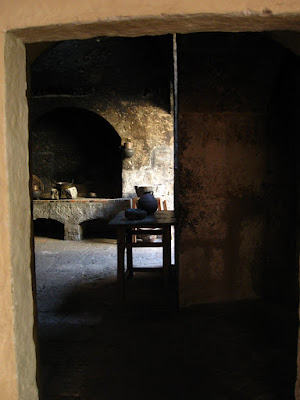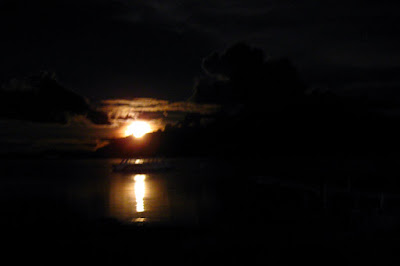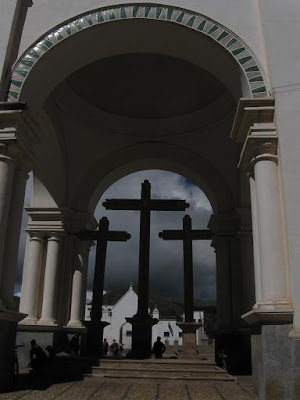Andrew, Erin, Cascada #2

Lucy. Note the cool hat. It's extremely regional. If you go even an hour east, the women wear bowlers with sparkly sequins. I think I prefer the Cabana style hat.

Back in Fure we bid our goodbyes and descended back towards the Río Colca. It was late afternoon when we arrived in Llahuar, which seemingly only exists for the tourists that stay there. Nonetheless, it was a great place to hang out for a night. The friendly dueña greeted us and showed us the way to the hot springs. Later we watched dusk fall on the patio perched above the río Colca and drank beer that was probably scandelously hard to pack in.
We foolishly agreed to eat breakfast at the slovenly hour of 6:30. The south canyon wall (with cursed northern exposure) was already baking in the sun by the time we started the 4,000 foot climb out of the ditch. By the time we had neared the top, it was midday and there was no shade to be found. We hadn't quite ran out of water, but the food was gone. Coca leafs sustained me for a while, but soon I was bonking and dutifully hallucinating faces in the rocks. Erin wasn't doing much better. Without a hat, the hateful tropical sun was cooking her brains and sunscreen-laded sweat was pouring into her eyes. We cursed our lazy start and painfully crawled towards town.
Shadowed in the depths but an oven higher up

Hallucinating in the midday sun

We made it with a half-hour to spare before the 2PM bus back to Arequipa. It was full, but we managed to finagle our way on, standing for the ride to the neighboring town of Chivay. En route, we had a fascinating conversion with a grade school teacher in Cabanaconde. He works five days in Cabanaconde before making the six-hour trip back to Arequipa, where his family lives. This is a marked improvement over his old post which was at 4500 meters in the mountains outside Cabanaconde and a four-hour walk from the nearest road. He only went home once a month there.
I asked him what he thought about Fujimori being sentenced to life in prison. He thought the trial was fair and the sentence deserved. That makes two out of two Arequipeños I've asked about it in favor, but Abimael Guzmán is from Arequipa, so who knows how that might bias things...
Once in Chivay, we got the last two seats on the late bus of the least-popular bus company. We quickly caught on as to its lack of popularity when we shuffled past rows of filthy, torn seats barely attached to the sticky floor and took our seat next to the (broken, of course) bathroom. Erin looked like a little Butch Cassidy with her hankerchief over her mouth in a vein attempt to filter out the rich scent of urine radiating from the bathroom. The bus was so bumpy, I swear I pooped a tooth. After an interminable ride, we arrived back in Arequipa.
Colca from the rim















































